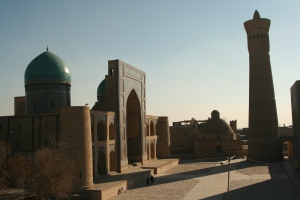Asia: More than the Sum of its Chinese Parts
March 19, 2012 Leave a comment

There is more to Asia than China - To succeed in the Asian Century it will be important to look beyond the Forbidden City.
Too often in Australia we think and talk of Asia as being China. Government strategies, political rhetoric, journalistic commentaries, and in many cases business strategies look to China as the be all of Asia. This is a simplistic and dangerous view to hold. China undoubtedly is a thriving and impressive market with somewhere around 1.3 billion people, including over 250 million in the middle class. It is the world’s largest country by population and will soon overtake the US as the world’s largest economy. China is a vast country stretching from the pacific coast in the East to Central Asia in the West, Russia and Mongolia to the North and India and the Himalayas to the South. Mega cities are abundant seeking to buy and sell all the worlds fare, while the resource potential is emerging anew with exploration and exploitation of rare earth minerals, and shale oil and gas reserves. China is clearly a behemoth, and it is important for any business and sovereign western government to plot a clear strategy for engagement with China. Asia however is more than just the sum of its Chinese parts.
Unfortunately I hear and see too often “Asia” being used as a proxy descriptor for “China”, which it clearly is not. We must remember that Asia is a vast continent which includes South Asia: Pakistan, India, Bangladesh (1 . 5 billion), Central Asia: Uzbekistan, Kazakhstan, Tajikistan, Kirgizstan, Iran etc (500million), and South East Asia: Indonesia, Vietnam, Thailand, Malaysia etc (600million). The rest of Asia dwarfs the population and labour resource potential of China. Asia makes up around half the world’s population. It is important to place this scale of opportunity into perspective. The trade opportunities in these other Asian markets are equally impressive. Central Asia and Indonesian have abundant oil and gas resources, while in many countries there are rare earth minerals amongst other mineral resources readily sought on global exchanges. Indonesian for example is now the world’s largest exporter of Coal.
 We should remember also that in addition to China, India and Indonesia make up three of the four most populous countries in the world…..and two of these markets are democracies ( India 1 billion, and Indonesia 250 million). The population size of other countries in Asia provides a renewed opportunity for manufacturing in the region from a non-Chinese market. The labour supply in Asian Countries such as Indonesia and India provide an opportunity for international manufacturers to tap into location benefits that can arise from proximity to sales markets and global supply chains. The market opportunities in Asia are indeed more than just China and many successful companies are developing strategies to tap into these emerging market opportunities. So when you next hear a politician, businessman, journalist or man on the street talk of Asia….ask them which part? If businesses are to truly succeed in the Asian century they will need to actively build a strategy that goes beyond solely a China Strategy, as Asia is a big place, and increasingly likely to be the economic super region of the future.
We should remember also that in addition to China, India and Indonesia make up three of the four most populous countries in the world…..and two of these markets are democracies ( India 1 billion, and Indonesia 250 million). The population size of other countries in Asia provides a renewed opportunity for manufacturing in the region from a non-Chinese market. The labour supply in Asian Countries such as Indonesia and India provide an opportunity for international manufacturers to tap into location benefits that can arise from proximity to sales markets and global supply chains. The market opportunities in Asia are indeed more than just China and many successful companies are developing strategies to tap into these emerging market opportunities. So when you next hear a politician, businessman, journalist or man on the street talk of Asia….ask them which part? If businesses are to truly succeed in the Asian century they will need to actively build a strategy that goes beyond solely a China Strategy, as Asia is a big place, and increasingly likely to be the economic super region of the future.
f you would like to meet with me to discuss how I can help you and your organisation achieve success in the broader Asian markets, or you would like to discuss new opportunities emerging in the near future, please send me an email (nathan@asiaaustralis.com). Alternatively check-out my LinkedIn Profile and the website of my company AsiaAustralis.


